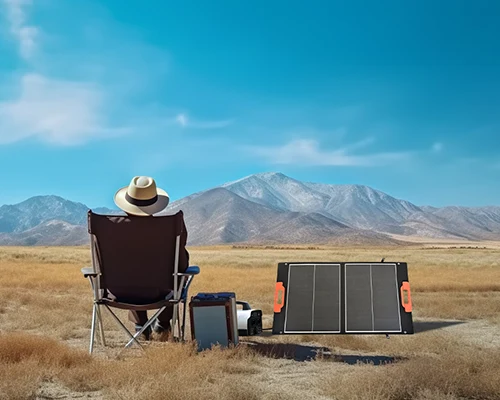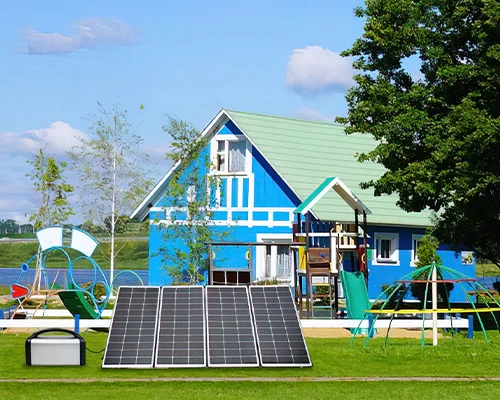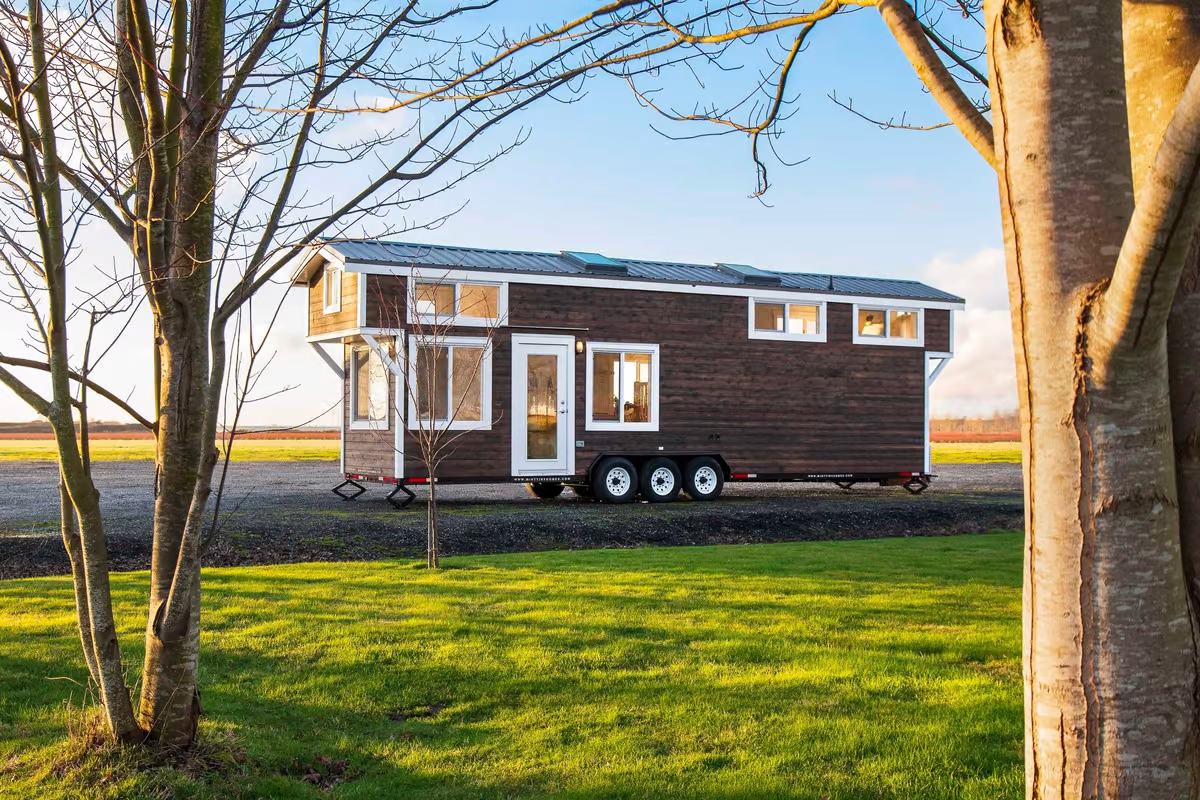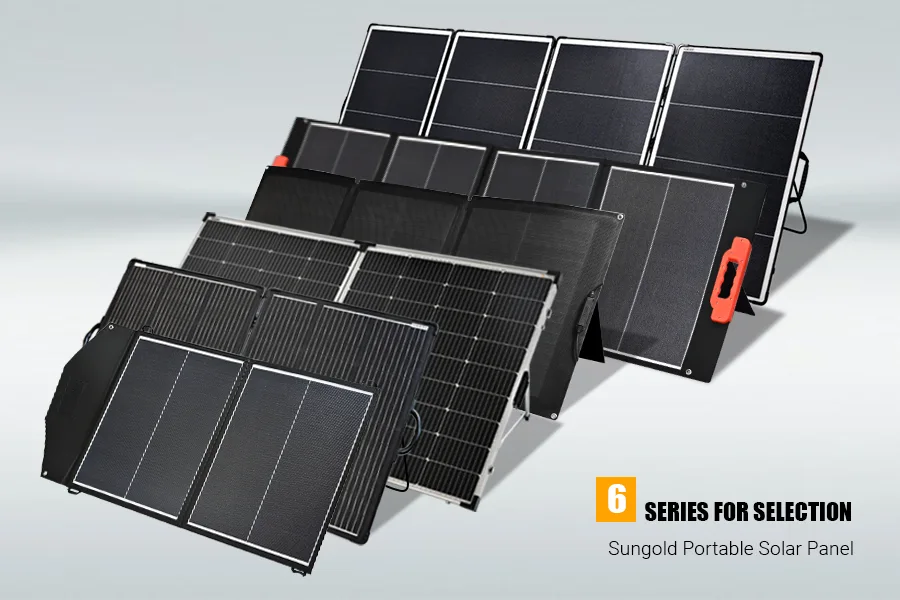How to Live Off The Grid?
Off grid living is a way of life where all necessities are sourced independently. Off grid living is the perfect way to escape the chaos of city life and enjoy a sustainable, self-sufficient lifestyle. Switching from a traditional lifestyle to an off-grid lifestyle will help you reconnect with what matters – freedom, nature and family.
sungold solar panels are the most efficient and powerful off grid solar system solutions provider. Consists of hi-power series solar panels and portable power stations that convert sunlight into electricity and power equipment.

Why choose to live off grid?
Global warming is turning cities into ovens, forcing people to adopt off rid lifestyles to protect the environment. In addition to reducing your environmental impact, it can also help reduce high utility bills. Here are more reasons to live off the grid.
Low carbon footprint: Living off the grid means you rely more on renewable energy and less on non-renewable energy. Sustainable practices help you reduce waste and become self-sufficient.
Reduce stress and anxiety: Connecting with nature can help you feel relaxed and less stressed. This way, you can improve your physical and mental health.
Grow Confidence: Learn new problem-solving skills to survive without utilities, gain confidence and become more self-sufficient.
Minimalism: Cutting ties with modern energy and opting for renewable energy involves simplifying one’s life and possessions, leading to a greater sense of fulfillment and purpose. minimalist one
Benefits of going off grid
There are many benefits to going off the grid, which we’ll detail below.
energy independence
Living on a grid-tied system means you are partially dependent on the utility company for power. If the grid shuts down, you may be without power for several hours. Going completely off the grid means you can only rely on the electricity you generate. You’ll have peace of mind and security knowing your home will continue to run smoothly in the event of an emergency.
environmental sustainability
One of the many benefits of using solar energy is a reduced carbon footprint. Using renewable resources eliminates your dependence on polluting fossil fuels, helping to reduce harmful emissions and protect the environment.
System design flexibility
Creating your own off-grid solar panel system gives you greater design flexibility. You can decide which solar modules, brands and production levels are best for your home. Many off-grid homeowners pair their systems with alternative energy sources, such as wind or backup generators.
Cost Savings and Energy Awareness
Not being connected to the grid will lower your electricity bill. Off grid systems meet or exceed your home’s required electricity usage, resulting in even greater savings. You will also become more aware of your energy consumption and work to conserve energy where possible.

The pros and cons of living off the grid
Before you learn how to live off the grid, it’s crucial to understand the pros and cons of this lifestyle. Carefully weighing the pros and cons will help you make a decision quickly.
| Pros | Cons |
| Save money | High initial costs |
| Sustainable lifestyle | Lots of work is involved |
| Protection from power outages |
What does it mean to live off the grid?
Technically speaking, off-grid living means disconnecting your home electrical connection from the local grid. You need your own power source to charge your phone and run home appliances like refrigerators, air conditioners, heaters, etc., especially when you live off the grid.
Necessities for living off the grid
At its most basic, off-grid living requires you to source four basic elements: shelter, electricity, water, and food.
Find the right location
When it comes to “how to live off grid”, the first important thing you must look for is a reliable shelter. An RV, a cabin in the woods, or a tiny house far away from civilization can all make ideal off grid homestead.
Briefly describe the best types of little house off grid
There are many options for off grid homestead. A tiny house can be anything from a cabin to a shipping container to a trailer or a tiny house on wheels (like my off-grid school bus). They can be mobile or stationary. They can be made from environmentally friendly building materials or recycled wood. They can be wood stove heated, electric forced air heated or gas heated. There are all kinds of options!
Solar energy
Solar position refers to the way the sun moves in the sky relative to the position of a building. For example, greenhouses are often built from north to south so that they receive maximum sunlight throughout the day. Your home should be built in the same way, preferably with large south-facing windows (in the Northern Hemisphere) or north-facing windows (in the Southern Hemisphere). Orientation is a free and easy way to maximize energy efficiency, so don’t overlook it when building! In hot climates, even just building the house under the shade of a large tree can be a simple solution.

electricity
Now for the most important thing – electricity – it will help you stay warm during the winter, cook food and communicate with loved ones. Solar generators are the most reliable power source for off-grid appliances.
Portable and lightweight solar panels allow you to generate electricity anytime, anywhere. The solar power supply system consists of foldable solar panels and a large-capacity power station. The hi-power, spc, and winner bag series are the most popular choices among off-grid enthusiasts.
Types of solar panels
There are three main types of solar panels: monocrystalline (most efficient, most expensive), polycrystalline (intermediate), and thin film (least efficient, least expensive). Efficiency explains the panel’s ability to convert sunlight into energy.
Wattage describes how much electrical output a panel can produce under optimal conditions. Panel wattages include 100W solar panel, 250W solar panel, 300W solar panel, 400W solar panel, and sometimes even higher. Obviously, on cloudy days you’re going to generate less energy, which means you’re going to need higher wattage and more solar panels in climates like the Pacific Northwest in the U.S. and Canada, where winters can be very intense Foggy and rainy.

water
Next, you need to make sure you have easy access to a steady supply of drinking water for bathing, drinking, and cleaning. You can choose a location with nearby groundwater, streams, or rivers. However, you must invest in a central filtration system to purify the water before it can be used.
food
When you’re truly off the grid, you’ll have to focus on gardening, foraging, farming, and fishing. Many people prefer to grow and harvest their own food to become self-sufficient, while many others stock up on dry goods and non-perishable food items as backup.
Best places to live off-grid: The 5 best states in America for self-sufficiency, experts say
- Alabama
Sweet Home Alabama. Off-grid permaculture ranked the state No. 1 with a rating of 9.8 out of 10. - California
California, the land of milk and honey. The name alludes to the state’s vast agricultural industry. Farmland is one of the reasons why an off-grid lifestyle is highly recommended. “California has earned the title of the Off-Grid State. - Missouri
This Midwestern treasure is also a great place to truly get away from it all. Off-Grid Homes says, “Much of the state is ideal for off-grid living - Alaska
Alaska’s laws are very favorable to those who want to live off the grid, as if it was designed that way. There are no states that ban going off the grid. This is probably the most popular. For winter lovers, Alaska is certainly probably the top choice. - Tennessee
Tennessee is one of the best states to volunteer. Living off the grid. It has a warm, humid climate, a long growing season, and fertile soil. Fresh water flows down from the Appalachian Mountains, and land is cheap. Communities in much of the state remain rural and self-sufficient.
FAQs
Choosing off-grid as your new lifestyle doesn’t have to be daunting. If you’re still confused about how to live off the grid, here are some frequently asked questions.
How much does it cost to live off the grid?
Innovations in the solar industry are making solar energy more accessible to ordinary people than ever before. But this is still a huge investment for an entire off-grid solar power system. It can cost anywhere from $10,000 (the cost of a 600W off-grid solar system in our 100 square foot school bus tiny house) to well over $75,000, depending on your power needs and location.
Depending on the type of home you build, you may or may not qualify for tax breaks and government solar rebates. Tiny homes on wheels generally do not qualify for solar rebates because they are not permanent structures.
How to go off the grid with solar panels?
Solar panels are a great way to go off the grid and enjoy renewable energy. However, you have to combine them with a portable power station to use the electricity generated to charge your devices. You can choose sungold solar panels and combine them with a portable power station to convert solar energy into electricity for your off-grid home.
Is it illegal to live off-grid in the United States?
Technically, it’s not illegal to live off the grid in any state in the United States. However, certain regulations in different parts of the country make off-grid living nearly impossible. As with the country as a whole, there are no set rules for off-grid living, and residency requirements can vary widely between communities.
In Conclusion
Living off the grid is possible, but it requires thoughtful preparation and hard work. With a lot of creativity, you can create your own sustainable lifestyle that allows you to live freely while still making a positive impact on the world.











